
Know How – Expert Edition – Braking Corrosion
24 Mar 2021
Category:
Braking Corrosion
With Graeme Ryder
Graeme is an expert in friction braking with over 20 years of engineering and automotive industry experience. Specialising in friction theory, he educates technicians at all levels in practical application and installation best practice. In this edition, Graeme delves into the inherent side effect of corrosion on braking components. If you require further technical assistance, please contact the NAPA Braking Technical Line on 0117 428 8090.
Introduction
Corrosion is a deterioration of metal or its properties caused by a reaction with the environment. The most common corrosion within the industry is the formation of rust on metal surfaces which occur when exposed to oxygen and moisture. Corrosion can be a dangerous and often costly problem and in automotive applications it can be aggressive due to high pollution levels, the weather and exposure to de-icing salts.
CAST IRON
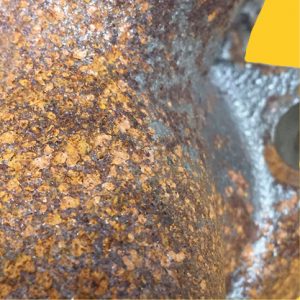
In braking, several components are made from cast iron – an essential material for safe and efficient braking. Due to its friction properties, resistance to distortion and durability, cast iron is highly effective but also highly susceptible to corrosion. This distinct characteristic can lead to the misconception of inferior quality when corrosion becomes visible on the surface.
Corrosion
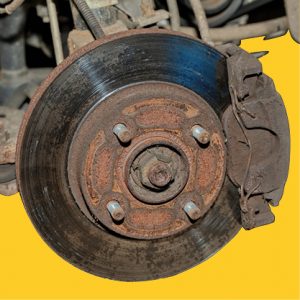
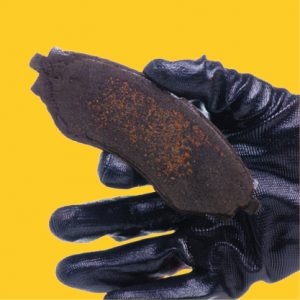
Whilst minor corrosion on the friction surfaces can be resolved by applying the brakes during a journey, disc edges and hubs are continually exposed to corrosion, further accelerated in more humid areas. NAPA brake discs are protected against corrosion by using a protective coating on the disc edges and the hub to match OE quality. No coating is used on the friction surface as this can contaminate the pads and result in noise.
Corrosion becomes a bigger issue when vehicles are left stationary for long periods in an area that has more than 80% relative humidity. If brake discs become corroded on the surface, braking efficiency will decrease and noise, vibration and harshness (NVH) levels can increase. In more extreme cases, corrosion adhesion can occur between the brake disc and pad that can cause severe damage.
Corroded backing plates on brake pads can cause delamination of the friction material, leading to the detachment of the friction material from the backing plate, a loss of braking efficiency/stability and/or NVH. To protect brake pads, NAPA coats the backing plate with an anti-corrosion layer during the manufacturing process, which if removed could make it more susceptible to corrosion.
Lubrication
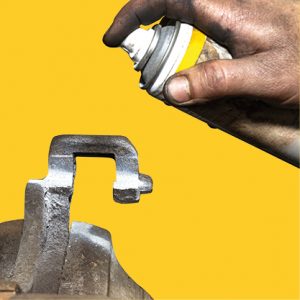
Components surrounding pads and discs can also become corroded and must also be treated to increase their longevity. Free movement is also essential for effective braking and therefore, contact points that are susceptible to corrosion must be lubricated.
The lubricant used must not contain metals (to avoid any restrictions to movement) and must be able to withstand high temperatures.
A quality ABS and ESP compatible petroleum-based lubricant is recommended to ensure that surfaces are adequately protected.
Cleaning
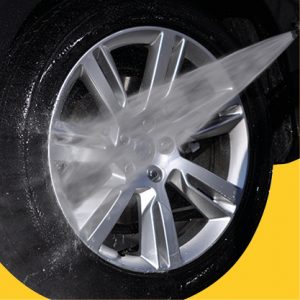
Certain cleaning methods and detergents can accelerate corrosion within the components. For example, pressure washing can push acidic detergents and moisture into tight crevices between the brake disc and hub, causing corrosion build-up and misalignment of the disc, leading to NVH. At the point of installation, it is best practice to clean the hub surface and protect it with a suitable lubricant to help prevent corrosion build-up.
Pressure washers can also detach caliper slider boots, leading to moisture ingress and corrosion. These must be removed, inspected, cleaned/replaced and protected with a water-repelling lubricant that is compatible with rubber boots.
Did you know?
The Society of Automotive Engineers (S.A.E) estimates the corrosion rate for automotive applications is in a similar range to marine environments (8.5 μm/year).
Chevrolet Spark Clutch Fitment Guide
A rattle generated from the clutch fork/release bearing area may be evident after a new...
Read MoreKia Sportage Clutch Fitment Guide
When installing a new clutch kit to the Kia Sportage CRDI (1.7, 2010-2015), you may...
Read MoreFuel Filter Fitment Guide - NFF2122
When replacing the fuel filter, it’s important to ensure correct fitment is followed. Keep the...
Read More